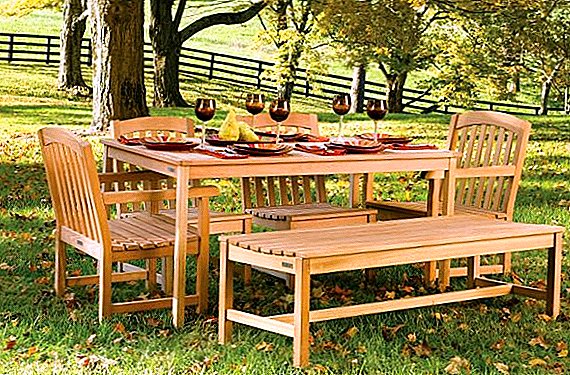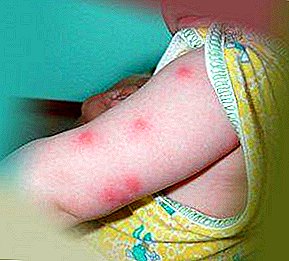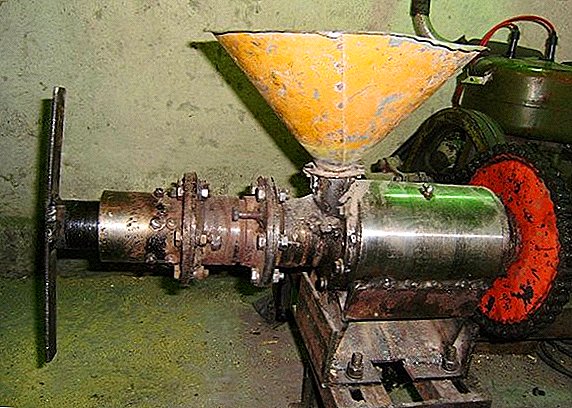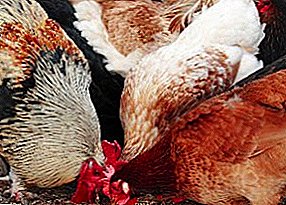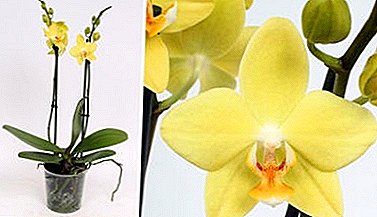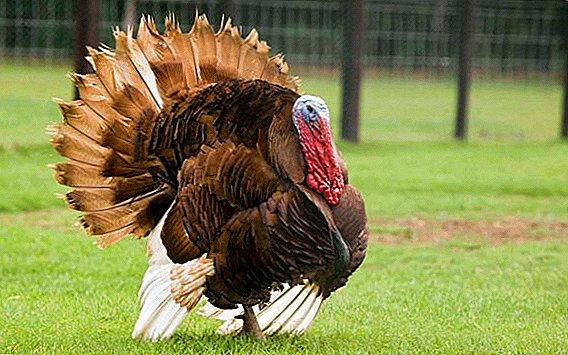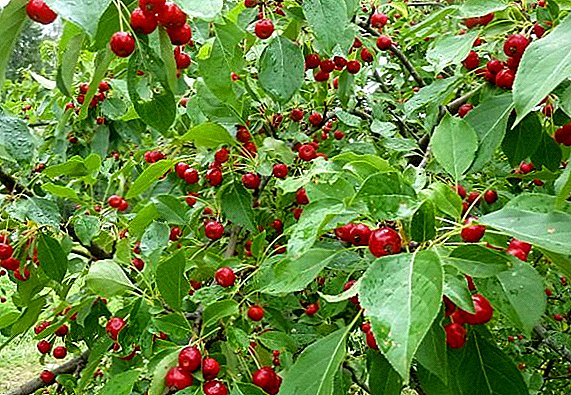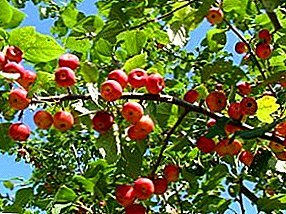 Apples raenki can be found in many gardens, especially in Siberia. This fruit is half wild, but apples do not lose their bright taste and presentation. An apple tree is considered an unpretentious fruit tree, and with proper care it can bear fruit for fifteen years. If you carry out regular pruning and prevention of pests and diseases, you can really get a good harvest for many years. Small fruits can be grown in your garden, and this article will help you in this matter.
Apples raenki can be found in many gardens, especially in Siberia. This fruit is half wild, but apples do not lose their bright taste and presentation. An apple tree is considered an unpretentious fruit tree, and with proper care it can bear fruit for fifteen years. If you carry out regular pruning and prevention of pests and diseases, you can really get a good harvest for many years. Small fruits can be grown in your garden, and this article will help you in this matter.
Did you know? Rannet apples are also called Chinese.
What are ratnet apples
 The grade of the rastenka was obtained as a result of the interbreeding of a Siberian berry apple and an apple sublimate. This fruit is winter-hardy and brings a rich harvest every year. The weight of the fruit is about 15 grams, and the diameter of the fruit is only 5 cm. In total, there are about a hundred varieties of rannet apples. The most famous of them - "Dobrynya", "Purple", "Long", "Red". For example, the variety "Dobrynya" is used for making juices, and "Long" is intended for compotes. From the "Purple" mashed, and from the "Red" is grown for processing. They are winter-hardy, have different yields and are grown for various applications. The varieties of these apple trees were bred for cultivation in Siberia.
The grade of the rastenka was obtained as a result of the interbreeding of a Siberian berry apple and an apple sublimate. This fruit is winter-hardy and brings a rich harvest every year. The weight of the fruit is about 15 grams, and the diameter of the fruit is only 5 cm. In total, there are about a hundred varieties of rannet apples. The most famous of them - "Dobrynya", "Purple", "Long", "Red". For example, the variety "Dobrynya" is used for making juices, and "Long" is intended for compotes. From the "Purple" mashed, and from the "Red" is grown for processing. They are winter-hardy, have different yields and are grown for various applications. The varieties of these apple trees were bred for cultivation in Siberia.
Did you know? In Europe, an apple tree fell during the time of Alexander the Great.
Choosing a place for landing
To grow your apple tree healthy and bring a good harvest, you need to prepare the soil, but before that you need to figure out where to plant the apple seedlings. The best place for planting an apple in the open air - away from buildings or trees and without drafts. To plant a fruit tree should be closer to the sun and away from other trees, as they can take away useful substances from young seedlings and block the light. 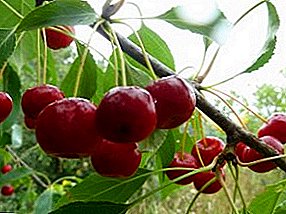 The soil for the apple tree is fertile. You can use the earth, which in its composition contains nitrogen and will not be too acidic. If the soil is very sour, you need to add ashes and dolomite flour. The amount is calculated from the acidity of the soil. It is important to take into account the deep occurrence of groundwater level. The norm for good growth of the tree is no higher than 2 m to the ground, but if in your area the groundwater is closer, you need to ensure such a place with good drainage. Terms of planting seedlings depend on their roots. If the seedling has a closed root system, it means that you can plant an apple tree from spring until the end of autumn. With an open root system, the young tree should be planted before bud break.
The soil for the apple tree is fertile. You can use the earth, which in its composition contains nitrogen and will not be too acidic. If the soil is very sour, you need to add ashes and dolomite flour. The amount is calculated from the acidity of the soil. It is important to take into account the deep occurrence of groundwater level. The norm for good growth of the tree is no higher than 2 m to the ground, but if in your area the groundwater is closer, you need to ensure such a place with good drainage. Terms of planting seedlings depend on their roots. If the seedling has a closed root system, it means that you can plant an apple tree from spring until the end of autumn. With an open root system, the young tree should be planted before bud break.
Did you know? The word "paradise" in Celtic sounds like Avalon ("land of apples").
Preparatory work before landing
The first thing you should do before planting is to make sure the seedlings are in good condition. You need to buy them before planting and it is better to do this from trusted sellers. Check for the presence of disease or rotting seedling is very simple. To do this, we recommend that you cut a small piece at the root of the tree. The cut should be white, but if you notice a different shade on it, then the seedling is sore.
You should also pay attention to the elevated part of the young tree. A seedling should be one-year old and have 3-5 skeletal branches. After purchase, you need to bring the seedling in the proper form, namely, to cut off diseased or broken roots. Slices should be treated with crushed coal and straighten the root system.
Important! Buds on a sapling should not be swollen.
 We now turn to the preparation of the site and the ground for planting. Holes for planting trees in the spring is better to prepare in the fall. The size of the fossa is 80 × 80 × 80 cm. When planting several seedlings, keep a distance between them - approximately 4 m from each other. The depth of the landing hole should be about 45 - 50 cm, a meter wide. The upper fertile layer after digging is best left aside. In the hole you need to fill a mixture of peat, ash and superphosphate.
We now turn to the preparation of the site and the ground for planting. Holes for planting trees in the spring is better to prepare in the fall. The size of the fossa is 80 × 80 × 80 cm. When planting several seedlings, keep a distance between them - approximately 4 m from each other. The depth of the landing hole should be about 45 - 50 cm, a meter wide. The upper fertile layer after digging is best left aside. In the hole you need to fill a mixture of peat, ash and superphosphate.
Important! Mix all ingredients well to prevent seedling root contact with fertilizer.
Until spring, the earth will settle and be saturated with rain or melt water. It is important to note that if you plant a seedling of a fruit tree in a clayey soil, then it is necessary to provide drainage from the stones at the bottom. If your land is sandy, the stones will not work. To retain moisture, it is better to put clay on the bottom.
We recommend planting apple seedlings on bulk hills. They should be about 85 cm in height, and not less than 1 m in diameter. To make such a hill, you need to take compost. But before that you should make a small barrier in the form of rubble or expanded clay. Such drainage should be placed in such a way that approximately 5 cm is left up to the surface of the earth. After that you can fill up the compost. Immediately before planting such a hill should be watered with a solution of potash fertilizer.
Important! Potash fertilizer should not contain chlorine.
For a high hill (about 80 cm and 1 m in diameter) ten buckets of such a solution will suffice. After that, on top of the hill should fill the fertile soil (about 40 cm). Then you can go to the most important, namely, how to properly plant an apple tree.
Planting young seedlings
 Apple trees can be planted in autumn and spring. You choose the landing time yourself, but we offer you both options. If planting is carried out in the fall, it is better to do it in November. At this time, the apple tree is well overgrown with roots when it is underground. It is best to drive a high stake in the middle of the hole about one and a half meters. The roots of the seedling should be straightened so that they germinate faster. Gently lower the seedling into the hole and top it with fertile black soil. It is very important to make it so that the root neck is level with the ground. After that, gently tamp the ground and provide abundant watering. Stake we inserted into the ground to bind the seedling to it. This will provide a young tree support.
Apple trees can be planted in autumn and spring. You choose the landing time yourself, but we offer you both options. If planting is carried out in the fall, it is better to do it in November. At this time, the apple tree is well overgrown with roots when it is underground. It is best to drive a high stake in the middle of the hole about one and a half meters. The roots of the seedling should be straightened so that they germinate faster. Gently lower the seedling into the hole and top it with fertile black soil. It is very important to make it so that the root neck is level with the ground. After that, gently tamp the ground and provide abundant watering. Stake we inserted into the ground to bind the seedling to it. This will provide a young tree support.
Important! It is better not to put any fertilizer into the ground, since the seedling may start budding prematurely, which will cause the tree to freeze.
In the first steady frosts around the seedling, complex mineral fertilizers should be scattered at a distance of 55 cm from the stem. Before the beginning of spring, when the snow melts, fertilizers will be absorbed into the soil, and accordingly, into the roots of the apple tree. If planting is carried out in the spring, then the soil should be prepared in a different way. To do this, during planting should be poured at the bottom of the hole a mixture of ash and nutritious soil. After that you should pour a bucket of water into it and mix with the soil.
In such a mixture, and lower the root system of an apple tree seedling, straighten it and cover the hole with fertile soil to the top. After such a planting, it is necessary to water the tree with 5 liters of water and after it is absorbed, add more soil to the surface so that the surface is even. You can also mix the soil with complex fertilizer. Also, when planting, you need to remember the root neck, which should be at the level of the earth's surface. After planting the apple seedlings, it is necessary to provide the tree with the necessary care, which we will discuss in the next section.
Did you know? In the seeds of one apple contains the daily rate of iodine, so necessary for the thyroid gland.
How to care for apple raznetki
 It is difficult and long to grow an apple tree, and at what time you would not plant it, it needs to provide the right care. From the first year of life, if you take good care of a tree, an apple tree will bring you high yields for many years. In this section you can learn how to care for a rantka at any time of the year.
It is difficult and long to grow an apple tree, and at what time you would not plant it, it needs to provide the right care. From the first year of life, if you take good care of a tree, an apple tree will bring you high yields for many years. In this section you can learn how to care for a rantka at any time of the year.
Processing and protecting the apple from pests and diseases
Like any plant, an apple tree can be affected by pests and diseases. To prevent this, should be preventive measures. They carry out prophylaxis either before bud break or after harvest. In the spring, trees are treated to remove insects that hibernate in the garden and to protect against fungal diseases. In the fall, prevention is needed in order to destroy insects that winter in the bark and bast of apple trees, as well as to protect the tree from various diseases.  To get rid of diseases of the apple tree, you should clean the old bark and whitewash the fruit tree. This procedure is carried out in spring and autumn. For diseases such as black cancer, anthracnose, moniliosis, and cytosporosis, it is recommended to remove the dried branches and smooth the necrosis (blackening) of the cortex to healthy tissue. After that, the slices should be processed with copper sulfate solution. If your apple tree was struck by a scab, blotch or apple flowering beetle, spraying is carried out with Bordeaux mixture, Decis or copper sulphate. Also, the fruit tree can strike powdery mildew, to get rid of which are suitable drugs such as Tiovit-Jet or Skor.
To get rid of diseases of the apple tree, you should clean the old bark and whitewash the fruit tree. This procedure is carried out in spring and autumn. For diseases such as black cancer, anthracnose, moniliosis, and cytosporosis, it is recommended to remove the dried branches and smooth the necrosis (blackening) of the cortex to healthy tissue. After that, the slices should be processed with copper sulfate solution. If your apple tree was struck by a scab, blotch or apple flowering beetle, spraying is carried out with Bordeaux mixture, Decis or copper sulphate. Also, the fruit tree can strike powdery mildew, to get rid of which are suitable drugs such as Tiovit-Jet or Skor.
To reduce the number of parasites will help autumn and spring spraying with special fungicides, such as urea, iron or copper sulfate. They burn the larvae of insects that can develop in the bark of the tree. Also in the autumn time you need to carefully examine the crown of an apple tree for the presence of nests for wintering from dry leaves or cobwebs. Such nests need to be collected and burned. Apple pests often hibernate in tree trunks. In order to get rid of more insects, you need to loosen the top layer of soil. This should be done in the fall.
Watering and feeding
 In the first season after planting the apple you need to ensure it is regularly watered. It will be enough to water the saplings once a week, even during moderately wet summer. For one watering on one tree goes to about four buckets. In the dry season you need to water more abundantly and regularly. In subsequent years, the apple tree is watered as needed - for example, in extreme heat or during the ripening of the fruit. Mature apple trees need to be fertilized as well as young trees. The first feeding is carried out in late April. Organic fertilizers such as humus and urea can be used. On the circle near the barrel pour 6 buckets of humus and about 2 kg of urea.
In the first season after planting the apple you need to ensure it is regularly watered. It will be enough to water the saplings once a week, even during moderately wet summer. For one watering on one tree goes to about four buckets. In the dry season you need to water more abundantly and regularly. In subsequent years, the apple tree is watered as needed - for example, in extreme heat or during the ripening of the fruit. Mature apple trees need to be fertilized as well as young trees. The first feeding is carried out in late April. Organic fertilizers such as humus and urea can be used. On the circle near the barrel pour 6 buckets of humus and about 2 kg of urea.
The second dressing is carried out before flowering. If it is a hot summer outside, then liquid feed should be applied. For this suitable potassium sulphate, superphosphate and Effecton. First you need to prepare a solution: 750-800 g of potassium sulfate, 1 kg of superphosphate and one bottle of Effecton need to be added to a barrel with water of 150-200 l. Such a solution should infuse for a week. Before processing, you need to pour water over the apple tree, and then apply such a liquid top dressing. On one tree takes about 50 liters of such a liquid. It is necessary to bring it in a circle, retreating from the trunk by 50 cm. After feeding, the apple tree is watered again. The third dressing falls on the period of fruit filling.
In a 200 l barrel, 15 g of sodium humate and 1 kg of nitrophoska should be diluted with water. The tree is watered before fertilizing. Make the feeding you need at a distance of 50 cm from the trunk. On one tree should pour about three buckets. The fourth dressing is carried out after harvest. You need to make a dry fertilizer, as autumn is the rainy season. 300 g of superphosphate and potassium sulfate should be added under each tree.
Did you know? If you need to calm down, you can make apple tea with cinnamon. It will help get rid of anger and irritation, chronic fatigue syndrome, sleep disorders, as well as headaches and apathy.
Pruning
Like all fruit trees, stunted apple trees need pruning. Pruning apple trees are carried out twice a year, in autumn and spring. With the help of pruning a tree, you will achieve that the apple tree will look compact, while its branches will not hang down or stick out in different directions. Pruning should be done so that the strong branches were below the weak ones, since the strong ones will outpace the growth of the main shoots. For cutting, you can use a hacksaw or pruner - depending on the thickness of the branch. If you cut thin branches, garden shears will do.
Formation of the crown should be carried out in the early stages of apple development. When your apple tree begins to actively bear fruit, you need to pruning regularly, as the branch under the weight of apples is overloaded. In the spring, young branches need to be removed so that the nutrients reach the bulk.
Important! If you remove the shoots in the warm season, you can expect that by the fall you will be able to harvest a large crop.
Pinching is done in the summer or late spring. At this time, young, not lignified sprouts should be pruned, and this can be done manually. Summer pinching helps retain nutrients and increase the speed of kidney development. Such pinching is carried out three times with a break of three weeks.
Soil mulching
As mentioned earlier, rannet varieties are winter-hardy, but in the early years it is better to mulch the trees for the winter. This can be done with the help of compost, biohumus, chicken droppings or overswept manure. It is necessary to lay out a small amount of fertilizer and close it on top with a layer of straw 5 cm thick. Under such mulch, earthworms will spread to feed on humus and straw. They will loosen and fertilize the soil to the required depth.
Useful properties of apples rannet
 Incense apples have a huge amount of useful properties. The apple contains sucrose, glucose, fructose, fiber, pectins, essential oil, vitamins, carotene, as well as ascorbic acid, potassium, sodium, calcium and malic acid. Fresh apples support acid-base balance, help with gastritis, stomach ulcers, anemia and kidney diseases. They are used for nervous disorders and act well on the brain, increasing efficiency. Also, apples Intentes strengthen the body and immunity. If you constantly use apples, you will forget about aging skin. Due to the low calorie content of apples are part of many diets with obesity. It is important that the injections do not cause allergies, and they can be given to children in the form of mashed potatoes.
Incense apples have a huge amount of useful properties. The apple contains sucrose, glucose, fructose, fiber, pectins, essential oil, vitamins, carotene, as well as ascorbic acid, potassium, sodium, calcium and malic acid. Fresh apples support acid-base balance, help with gastritis, stomach ulcers, anemia and kidney diseases. They are used for nervous disorders and act well on the brain, increasing efficiency. Also, apples Intentes strengthen the body and immunity. If you constantly use apples, you will forget about aging skin. Due to the low calorie content of apples are part of many diets with obesity. It is important that the injections do not cause allergies, and they can be given to children in the form of mashed potatoes.
Did you know? The English name for apple is derived from Apollo. The fact is that in ancient Greece the apple tree was considered the sacred tree of Apollo.


